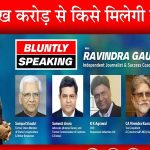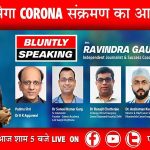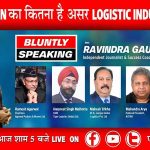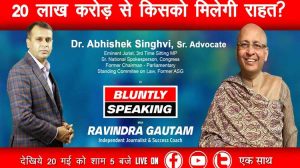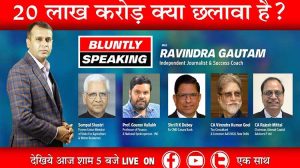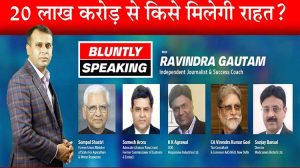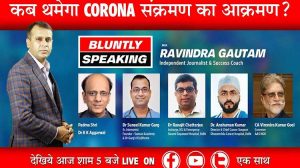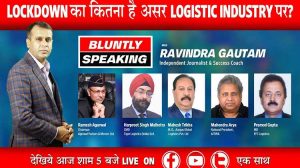In most of the states, the price of petrol has crossed Rs 70 mark and even diesel price crossed Rs 60 per liter mark. The increase in the price of petrol and diesel seems to be beneficial for the government but the public is getting poor.
From this year, on June 16, the system of daily dynamical pricing has been implemented on the pricing of Petrol and Diesel. Since then, after the ups and downs in fuel prices, petrol in Delhi reached Rs 70.38 and diesel at Rs 58.72 per liter on September 13, 2017. The most expensive petrol has been marked in Noida, which goes up to 72 rupees 53 paise and diesel 59 rupees 82 paise per liter.
Then on second place, Mumbai is there, where on 13 September the price rate of petrol goes up to Rs. 79.48 and diesel at 62.37. from July 1 to September 13, the price of petrol has seen the hike of 8 rupees and price of diesel has also increased by 5 rupees. Modi, who bashed the UPA government on rising prices, has himself failed to control the prices of oil after coming into the power.
Whereas, after Modi comes into the power, the prices of crude oil fell by 60 percent in the international market. But the price of petrol and diesel has increased in the market. With the promise of good days on May 26, 2014, Narendra Modi’s government was formed at the center.
On June 1, 2014, crude oil was at $ 115 a barrel in the international market and petrol was sold at Rs 72 per liter in Delhi. Now call it the luck of the Modi government or something else, since the day the crude oil prices started falling in the international market, and in January 2015 crude oil dropped below the $ 48 per barrel in the market, i.e. a decrease of $ 67.
The fall in crude oil prices did not stop there. Crude oil prices reached around $ 30 in January 2016. It was said that crude oil became cheaper than a bottle of bisleri mineral water. But, Oh Lord, look at the common man’s fate, he is getting expensive oil only.
In January 2016, petrol was sold at Rs. 60 per liter on Delhi’s pumps. Prime Minister Modi has been criticizing UPA over the rising prices of oil during his election rally. But after coming into power, the Modi government has failed miserably to control the oil prices in the last two years. Within 3 months of the policy by the Central government of Modi, of changing the rate of petrol-diesel every day, the price of petrol-diesel increasing like it has caught fire.
On June 16 this year, the central government imposed a new policy on the petrol-diesel and gave the right to companies to fix the price from the government control, after which the rates of petrol and diesel are increasing steadily daily. Consumers have not got any relief from the new system of the central government.
Due to the central government’s policy, prices are changed every morning at 6 am, for which petrol pumps have to get connected to the companies through online. During the UPA-2 tenure from 2009 to May 2014, the price remained between 70 to 115 dollars per barrel. Meanwhile, the price of petrol swings between 55 and 70 rupees.
In May 2014, the price was Rs 71.41 per liter, when the crude oil price in the international market reached $ 109.9 dollars per barrel. That means Modi Government is selling expensive petrol and diesel since May 2014. It is also important to know, that excise duty on petrol and diesel has changed 11 times in the three years of Modi government’s tenure.
On April 1, 2014, the excise duty on diesel was Rs 3.56 per liter, which has gone up by 380 percent to 17.33 rupees. On April 1, 2014, excise duty on petrol was Rs 9.48 per liter, which increased by 120% to Rs 21.48. In 2013-14, the central government had earned Rs 77,982 crore from excise duty on petrol and diesel, which has increased to Rs 24,261 in 2016-17.
It is also important to know how the price of petrol and diesel is decided. About cent percent of the oil is imported in India. This oil is in its natural form called crude oil. Generally, on the international level, this crude oil is bought and sold according to per barrel rate. There are about 160 liters of crude oil in a barrel and the payment has to be paid mostly in US dollars. This transaction is done only by controlled entities. Payment is determined on a daily basis and based on the latest prices.
Minimum purchase is 1,000 barrels. The crude oil that India imports is priced at $ 50 per barrel in the international market nowadays. One dollar is equal to about 65 rupees, so 160 liters by 65 was 10,400. That means the government has to pay 10,400 rupees for 160 liters of crude oil and the cost of one liter of crude oil was about Rs 26. To clean it, the oil refinery, like Indian Oil, Bharat Petroleum, charges its cost according to Rs 4 per liter. Now the price of per liter ‘clean’ petrol cost Rs. 30.
Now this clean and purified petrol has to reach to the petrol pump for the consumer’s consumption, and from here begins the intervention of the government. Then, at this price of 30 rupees, a typical excise duty of more than Rs. 17 has imposed. Now, the price will be 30 + 17 = 47 rupees. Now the petrol pump that sells it will be commissioned for about 2.25 rupees on every liter. After adding the amount, the price will be 47 + 2.25 = 49.25 rupees.
Now the VAT is being levied at this last price, which is different in every state. In Delhi, VAT is 25%, that means 25% of the 49.25 happened to be more than Rs. 12. Now the price of petrol sold by petrol pump will be more than 61 rupees, (49.25 + 12 = 61). This is the reason why petrol price varies state to state because VAT is different in every state.
Today, Petrol in Mumbai has been sold at the rate of 80 rupees per liter or more and this VAT is only responsible for it. Petrol-diesel is not currently under GST, and that is how public will continues to suffer and the government keeps on filling their pockets.




